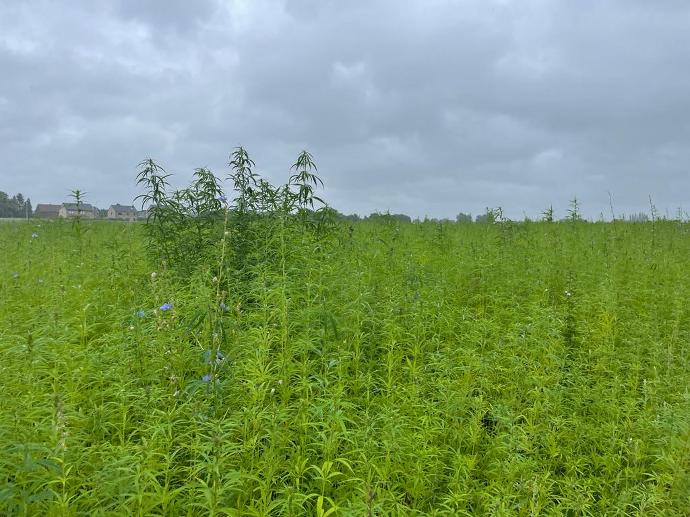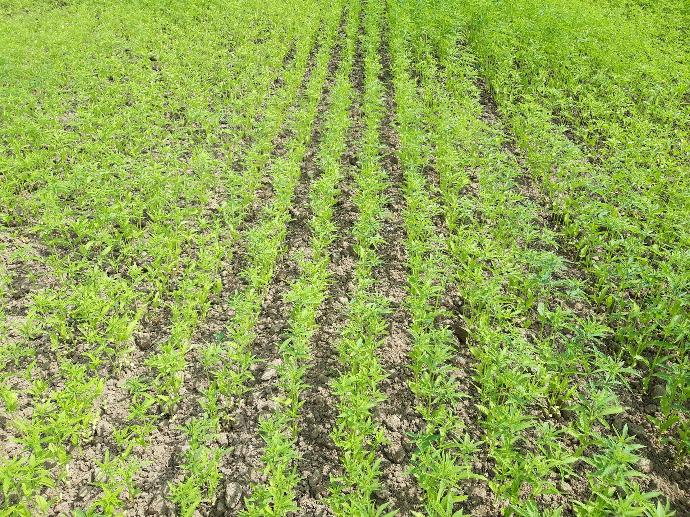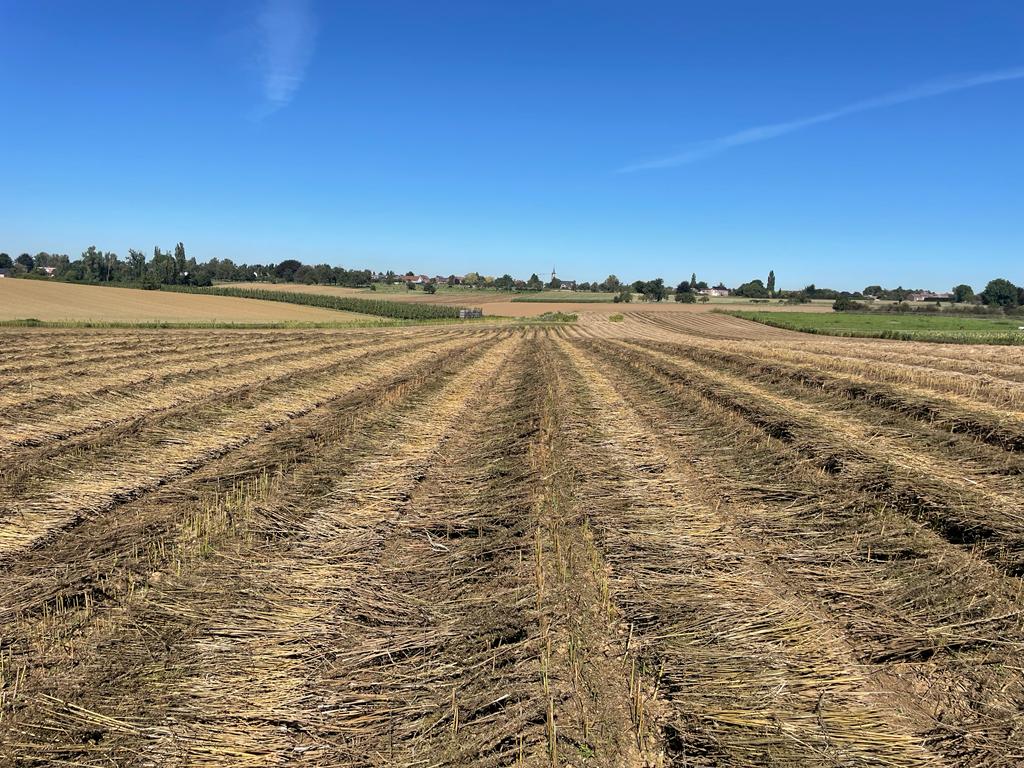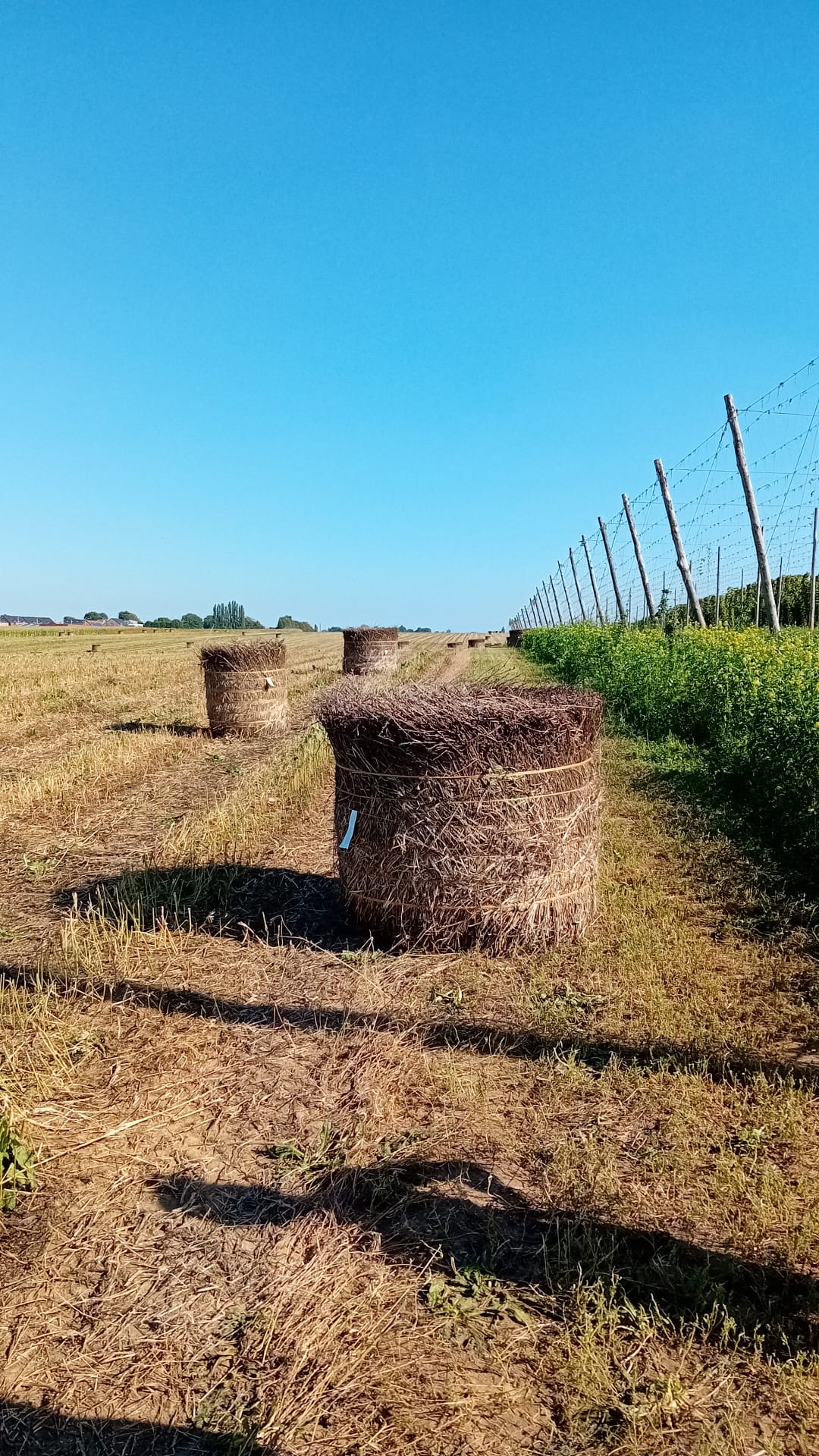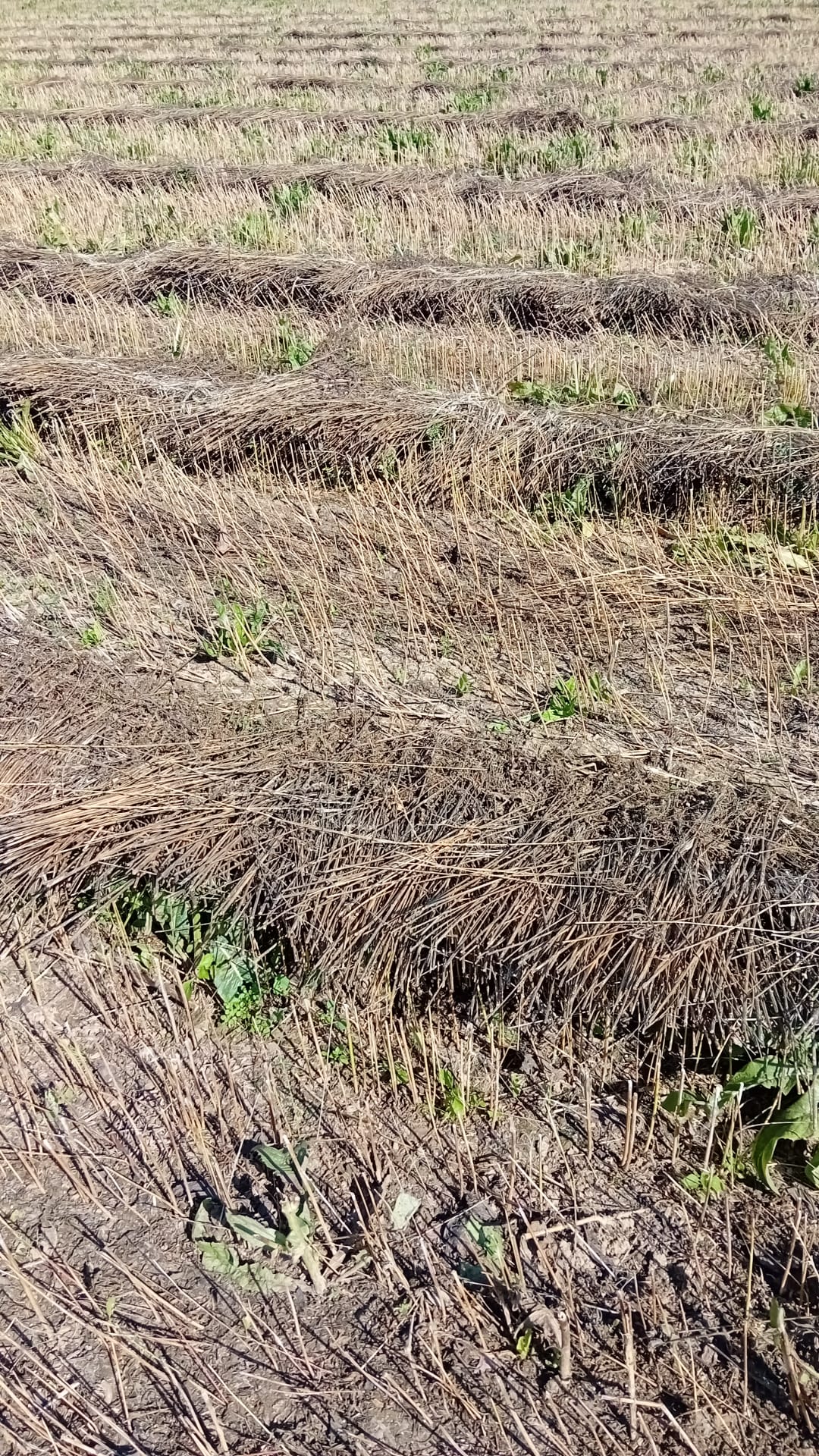Textile hemp has made remarkable progress in recent years, including through the development of hemp harvesters for the textile sector. In 2023, the Hemp4Circularity project set up several field trials. In Belgium, Inagro and Valbiom monitored hemp fields, while Van de Bilt did so in The Netherlands and Natuvalis in Germany. Meanwhile, HOGENT conducted experiments to assess the impact of early and late harvesting on straw and fibre yield.
4 hemp fields closely monitored in Belgium, The Netherlands and Germany
Partners Inagro, Valbiom, Natuvalis and Van de Bilt each followed a hemp field from sowing to baling. The plants were closely monitored to gain insight into the growth of hemp. All fields were sown during the usual sowing window for hemp (end of April-mid May). Two factors seem to have played an important role in the results: soil compaction and harvest time.
First, soil compaction appears to significantly affects hemp development and growth. Plants measured less than 1 metre in height just before harvest, compared to the usual 2 metres. Tuber crops like chicory or potato, harvested in wet conditions, can negatively impact the soil, affecting following crops such as hemp.
A late harvest also had a significant impact on the results. Wet weather conditions delayed the harvest in all fields in Belgium, The Netherlands, and Germany. Hemp for textile applications is typically harvested at the 50% flowering stage. An early hemp variety flowers by the end of July, with the ideal harvest time being the first week of August. In 2023, harvesting was only possible in the third week of August. Because of this, the plants were larger, making harvesting difficult.
Impact of harvest time at the Bottelare experimental farm
In 2023, partner HOGENT conducted field trials to assess the impact of harvesting at different stages, other than 50% flowering. Although the literature suggests that the best time to harvest textile hemp is during the flowering stage, this is not always possible due to adverse weather conditions or limited availability of harvesting machines. Therefore, it would be beneficial to explore a broader harvest time range.
To do so, a field trial on harvest time was set up at the Bottelare experimental farm of HOGENT. To conduct this study, an early variety, Santhica 27, and a late variety, Santhica 70, were chosen. The early variety was harvested at three different times: at 50% flowering, at seed formation, and at maturity. The late variety was harvested at two different times: before flowering and at 50% flowering. Fibre yield and quality of both varieties at different times were analysed to evaluate the influence of harvest time on both parameters.
Results show that harvesting earlier than the 50% flowering stage (i.e. pre-flowering) leads to significant yield losses in biomass and bast fiber yield, but not for long fiber yield. On the other hand, harvesting in a later stage than 50% flowering (i.e. at seed formation or seed maturation) does not show significant yield differences, but the quality of the fibers appears to be of lower, mainly coarser.
Overall, the optimal combination of both fiber yield and fiber quality is only achieved when harvesting at 50% flowering stage. However, harvesting a late cultivar in the pre-flowering stage may be a viable option. The trial will be repeated in 2024 to further clarify those findings.
What does season 2024 hold?
In 2024, Hemp4Circularity will continue to closely monitoring hemp fields. The year has already presented an atypical spring. Although most hemp being sown during the normal sowing window, temperatures were chilly and precipitation levels were high in some regions. As a result, hemp germination was difficult and slow.
For example, typically, 30 days after sowing, plants are expected to reach a height of approximately 60-80 cm. This year, however, in certain fields, plants have only reached heights of 20-25 cm. However, there is room for optimism as as we anticipate higher temperatures that will accelerate development. Straw and fiber yields will be closely monitored throughout the season.
Interested in growing long-fibre hemp? Don't miss our next field visits! Visit our agenda page or follow us on LinkedIn to make sure you don't miss out.
